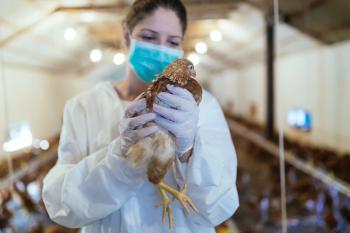
Testing for Viral Respiratory Infections
Experts review testing recommendations for respiratory viral infections and the types of testing options available.
Episodes in this series

Tina Tan, MD: Since we’re talking about all these different diseases, what are your recommendations for who should be tested for these diseases? Let’s start with Wendy.
Wendy Wright, DNP, ANP-BC, FNP-BC, FAANP, FAAN, FNAP: I have a low index of suspicion because I know that if I don’t test, I can’t treat adequately. The good news, as Priya mentioned, is that with COVID-19, patients have often tested multiple times by the time they come to us. But in terms of flu, or RSV [respiratory syncytial virus], they’re not testing. If you’ve got an upper-respiratory infection, you’ve got 1 until proven otherwise. In fact, I just saw someone for whom all 4 of these tests were negative. I was like, “Well, you have some virus. I can’t quantify which 1 it is, but we need to treat you symptomatically.” Earlier is better so that we can get them treated, particularly our high-risk patients.
Tina Tan, MD: Kevin, what would you do in the situation where you have individuals who are exposed to these individuals who are sick but asymptomatic? Would you test these individuals at that point?
Kevin Michael Reiter, MD, PA: That’s a great question. It depends on the supply. We’re extremely limited on our rapid antigen supplies for flu tests, for example. I tend to not treat somebody with an asymptomatic exposure to the flu. However, if they were unvaccinated, I’d offer them chemoprophylaxis. In terms of the value of testing vs the ramifications of utilizing a test on somebody who’s asymptomatic, I’d probably want to save that test for someone who’s symptomatic. In the COVID-19 world, we know that’s a little different because of the presymptomatic spread of the virus. In a COVID-19 situation, with test supplies not being a limiting factor, I’d lean toward exposure patients getting a good-quality molecular test because they’ve already done the home antigen tests. That’s my thought process and how I manage patients given the environment.
Tina Tan, MD: Priya, can you discuss the testing recommendations from the CDC [Centers for Disease Control and Prevention] with regard to flu and some of the other viruses?
Priya Nori, MD: Sure, Tina, I’d be happy to. I can give an example from my home state of New York, which my colleague, Kevin Michael Reiter, knows well. In New York State, for anyone presenting to a health care setting, we’re doing what’s known as “fluvid” [COVID-19 and influenza] plus RSV, where we have all 3 tests on the platform. The health department requires us to do this between a certain month and a certain month if there’s a year with a heavy circulation of all those viruses. That’s tremendously helpful to us because we can triage at admission: who has what. Of course, it has infection control and treatment implications. It’s very helpful for that.
One thing about CDC guidelines is that while they’re helpful, it’s always good to check in on the state of affairs at the moment. Kevin mentioned that there are shortages of things like testing materials. As I mentioned previously, we can always get our hands on antivirals, and it sounds like Wendy’s experience and everyone’s experience has been the same. More so, I believe the movement is to test those for whom it would make a difference in management. I was looking with our ED director with some excellent guidance from the University of California, San Francisco about its guidelines, which essentially said to test if it would make a difference to the patient’s care. That may make a difference. It may determine certain infection control measures that are in place. It may determine if they’re candidates for treatment for COVID-19, influenza, or both. But there may be an intermediate group who are a little far from their illness. They’re at a moderate risk—they’re not super high risk—so we don’t worry about them succumbing to the illness. If trends continue, we may have to take a delayed approach with testing and treatment for certain groups who aren’t super high-risk, especially if we can’t have an unlimited supply of testing and treatment. That’s how I look at this.
Tina Tan, MD: Kevin, are there situations in which somebody did a rapid test, it’s negative, and you’re not sure which disease this person has? Are there secondary tests you might use? Would you go to PCR [polymerase chain reaction] and other tests? Would you retest them?
Kevin Michael Reiter, MD, PA: That’s a great question. We deal with this conundrum in the clinical world every day. One thing that I’ve started doing, with the limitation of flu testing, is that if I have a flu test, I’ll do it because it’s negative. Obviously, we know the sensitivity isn’t that great on some of the rapid antigen–type flu tests. Then I’ll do a COVID-19 PCR molecular test. If I know the molecular test is negative in real time, I’m inclined to treat them for the flu empirically. Because as Priya mentioned, if you’re going to do a test, it should have some direct implication, some value in what you’re treating. We’ve learned that in all our training. If you’re going to do a test, what’s the reason for the test? If I’m going to treat that patient with Tamiflu, I don’t think it’s worthwhile to send out a PCR in that situation because it may be a few days before I get the results. I’m probably not going to change management in that situation. If I have a negative PCR and a negative molecular test for COVID-19, and I suspect this person has the flu—regardless of whether I’m able to test them, or I test them and it comes back negative—if they’re in the risk category, I’m going to prescribe antiviral treatment for that patient.
Tina Tan, MD: We know that with some of the tests, the age of the person makes a difference. For example, with RSV, the antigen test is good for young kids but not so good for older kids, adolescents, and adults. That’s something else to take into consideration.
Transcript edited for clarity
Newsletter
Stay ahead of emerging infectious disease threats with expert insights and breaking research. Subscribe now to get updates delivered straight to your inbox.


























































































































































































































































































































